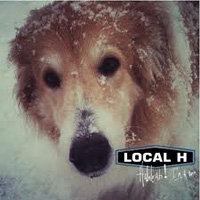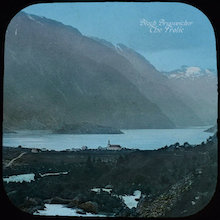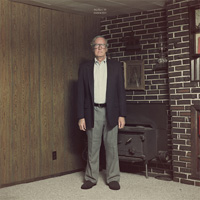 It’s So Easy (and other lies)
It’s So Easy (and other lies)
by Duff McKagan (Touchstone/Simon & Schuster)
by Scott Deckman
Duff McKagan is one hell of a nice guy. And he’s also one lucky son of a bitch. These are the two main things you take away from It’s So Easy (and other lies). Maybe that, and nice guys sometimes do finish first. Though he was hardly a nice guy in earlier incarnations. He was a goddamn mess. Still, even in the dark, irresponsible times, there was a kernel of goodness there or he wouldn’t have made such a startling transformation.
To start off with, Part One of this book is a bit unconventional, as it weaves between back and way back, until settling into a more traditional linear narrative afterwards. Anyone familiar with Duff McKagan knows how it started for the tall blonde bassist: The youngest of eight kids in an Irish family in Seattle, WA, playing in punk rock bands and generally being a likeable (I’m assuming) no-goodnik.
Duff, born Michael Andrew McKagan on February 5, 1964 (Duff and I share a birthday, but he’s much older – hint, hint), was born into a musical, rock-loving household, with older brother Bruce even playing in a rock band. But things really changed for Duff when he heard Iggy & the Stooges’ Raw Power for the first time in the seventh grade. This helped lead to his immersion in the punk scene in Seattle, paying his dues in, most notably, the Fastbacks and 10 Minute Warning. Duff also tells of a love affair with the music of Prince and junkie nonpareil Johnny Thunders (who later proved anything but heroic hiding in his dressing from Axl after word got out that the typically jonesing Thunders hit on the lovely Erin Everly when Guns N’ Roses gigged with the proto-punk legend).
Another interesting tidbit: We learn that a pre-16-year-old McKagan had a predilection for stealing cars; he and his friend Andy held on to some of them for more than a week. Duff broke his cherry on a 1963 Volkswagen Beetle. He says this led to other criminal mischief as well, and one might never know what would have become of McKagan if he didn’t have music to kick around.
One other thing we learn that most probably didn’t know: Duff had a near-death experience where he almost drowned in a waterskiing accident the summer between sixth and seventh grade. It was brutal: Muscles from his right shoulder to elbow were stripped off and he was underwater for a while. This event had a dual effect on him. He now had no fear of death, claiming he saw the other side and it was a warm, blissful place where he felt the presence of relatives who’d passed on, but it also left Duff convinced he would be dead by age 30. So how’s chugging vodka by the bottle daily gonna make any difference?
Talk about taking a dump on Providence.
Duff started having panic attacks at 16, which he erroneously attributed to drugs. He quit them on the spot after his first episode (he was experimenting with speed, cocaine, mushrooms, and LSD at the time). As a coping mechanism, he upped the alcohol intake, and later, ironically, returned to drugs for the same reason.
Things weren’t turning up all roses (pardon the pun) in Emerald City, as a dead-end life and heroin scourge gripping his scene made our young Boy Wonder point his 1971 Ford Maverick toward Los Angeles, CA, to make it as a rock star. And by God he did! (Don’t try this at home.)
Already having spent time as a pastry chef, he set about getting a job at the Black Angus Steakhouse in Northridge, CA, where his brother Matt worked, which he arranged on a gas station payphone en route to L.A. (Talk about cutting it close, Duff actually started the night he made it down there.) And it startled the transplant that “Hollywood” was actually more than 20 miles away. While he initially stayed with his brother, some nights, to be closer to the mayhem, he slept in his car in the Hollywood Hills. Later, he tells of renting a Hollywood apartment in a complex full of Section 8ers. It was also right around the corner from the famed Musicians Institute (which has since moved across the street). Poor Duff knew of neither. Sometimes people from big cities, and Seattle is a pretty big city, can seem like a hayseed in unfamiliar environs, especially in a sprawling metropolis like L.A. And this was long before anyone had heard of, much less had access to, the Internet.
Knowing of Los Angeles’ reputation for axemen and being somewhat of a multi-instrumentalist, Duff wisely decided to stick to the bass. Most readers will be interested in Duff’s take on the initial meetings of the future members of Guns N’ Roses. We get the Canter’s Deli story meeting with Steven Adler and Slash. Though he liked the two rockers – even telling of the “‘holy shit'” moment when he first heard Slash play an acoustic guitar – their type of arena rock wasn’t what he was looking to do. Not only resistant to cock rock, Duff also wanted something beyond played-out punk and hardcore: He was searching for something different. And he found it, ironically, with Adler and Slash in the form of Guns N’ Roses, where he, Steven, Slash, Izzy Stradlin and Axl Rose honed in on something new and exciting; they knew it as soon as they played their first song.
We get the storied, ill-fated West Coast “tour” that ended up only being one gig in Seattle, even learning how Axl and Duff tried to burn down Gorilla Garden after the sleazy owner refused to pay them. It may or may not have been a half-hearted attempt, but it was a stupid thing to do. Booze was likely involved in the decision. Regardless, it took balls.
We also read of the debauchery, the sex, drugs and rock’n’roll every dirtbag with a guitar from his late-teens to 20s dreams of. And they paid the price, all battling addiction at some point during that ride (with three members incurring real, lasting damage), except for maybe Axl, who was crazy enough as it was. Duff paints the picture of their practice space in West Hollywood, ironically stationed behind a Guitar Center (ironic because the boys hardly had two nickels to rub together in those days; and yes, Duff’s story is full of ironies), which also served as their party palace and even living quarters when need be. It’s one of the most storied practice spaces in rock history, right up there with the Stooges’ Fun House or that collective space shared by the MC5. We also read about the band honing their chops during constant practice and gigging, and, especially interesting for hardcore fans, how the songs on Appetite for Destruction came together.
Duff’s love of suds was even immortalized by a new cartoon he thought destined to fail, a little something called The Simpsons, the show asking him for his blessing to name Homer’s fictional beer “Duff.” He was even bequeathed the nickname “King of Beers” by Axl (which he thinks probably gave the show’s writers the idea). But what started as copious amounts of beer eventually graduated into a half-gallon-a-day vodka habit, and then, of course, came the cocaine, which he said he did, partly at least, so he could drink longer. The fun powder literally sheared a hole in his septum that required surgery. So yes, the hedonistic lifestyle wasn’t quite working out that well for him, particularly post-Appetite.
We get to read about the band disintegrating before McKagan’s drunken eyes, with neither he nor his equally inebriated bandmates able to do anything about it; communication within the band was terrible. With King Axl’s antics becoming more erratic – stunts like not hitting the stage on time, storming off it, throwing tantrums and generally pissing people off – Duff fell deeper into addiction and emotional upheaval.
At one point, in between legs of the Use Your Illusion tour, Duff was so distraught he found himself with a 12-gauge shotgun in his mouth, thinking back to how calm his near-death experience was. Something was seriously wrong here.
Somehow, the record company thought it was a good idea to send Duff out on the road to promote his debut solo release Believe in Me after the interminable Use Your Illusion tour, which even Axl questioned. Duff, drinking heavily, had to cut the tour short. By this time he’d switched to wine, only he was drinking about a case (12 bottles) a day.
A lifestyle like this can’t last forever, and being loaded, he had the moolah to really push the degeneracy to the limit. But a month and change after sitting next to Kurt Cobain on that fallen icon’s last flight from Los Angeles to Seattle (who would be dead within a week after going AWOL from drug treatment center Exodus), the reaper finally came calling for him as well.
Duff’s pancreas burst, resulting in third-degree burns inside his body. It nearly killed him. But, ironically, it may’ve saved his life – for two reasons. One, with his damaged pancreas, he couldn’t drink anymore even if he wanted too. And two, he had to witness his wheelchair-bound mother, afflicted with Parkinson’s disease, watch over him in a hospital bed amid morphine and Librium drips. Duff claims this reversal of the natural order really started his road to abstinence and recovery.
And Duff chose a unique road to recovery. It started off with mountain biking, and eventually led to martial arts, something he still practices today. The book details that road back in vivid detail, from his workouts and diet, to the relationships he made with bike racer Dave Cullinan and trainer/sensei (and former kickboxing champion) Benny “the Jet” Urquidez. Urquidez in particular played a huge role in his transformation. Duff got so immersed in this lifestyle he even employed it on others with substance abuse problems, including Velvet Revolver’s Scott Weiland, who, while he responded positively to “Man Camp,” may still be succumbing to Scott Weiland. Due to stress, Duff had a brief relapse on Xanax in 2005. Luckily, he was able to stop that mess rather quickly with the help of rehab.
McKagan also lets the reader in on the formation of Velvet Revolver with Weiland, Guns alums Slash and Matt Sorum, and, for those keeping score at home, second guitarist Dave Kushner. After their initial success, we hear of later problems with Weiland: Rock star egos and drugs. Though the fact that he was rumored to be reuniting with his old band, the Stone Temple Pilots, couldn’t have helped matters. Velvet Revolver is currently on hiatus. And we get the word on Loaded, the rather bland post-alt rock band Duff actually fronts. It’s safe to say neither group will make punters forget about Guns N’ Roses any time soon.
And that’s the question, isn’t it, why a good few will want to read this extended confession. What’s it gonna take to get these five middle-aged misfits back together to make the money grab of all money grabs? Duff still seems to be friendly with all of them, including Herr Axl, whom he reunited with in England when they were unknowingly booked into the same hotel; Duff was there on business, Axl was playing a show with the latest Guns lineup. The two rekindled their relationship, with Duff even sitting in with the band on “You Could Be Mine” and “Patience.” They later had dinner; Duff’s wife, Susan Holmes McKagan, was there as well. (You may’ve seen Holmes McKagan in the E! reality show Married to Rock. Duff also made appearances on the program.)
Maybe the reunion happens, maybe it doesn’t. The world won’t end either way.
(Speaking of Axl, despite his mercurial nature, he was the only band member who called Duff in the hospital after he suffered his pancreatitis, even later coming to Seattle for a visit. So he scores point there.)
Duff, who’s a writer these days, penning columns for both Seattle Weekly and ESPN.com (and for a while, Playboy.com – nice perk), also went back to school and took courses in business and economics, and has since started Meridian Rock Capital Management to help other rockers better manage their money. Told you he was nice. To be honest though, the book suffers a bit when Duff tries to flex his literary chops too much: He’s not quite his hero Hemingway yet.
Where’s that leave Duff today? Well, he’s in Loaded instead getting of loaded, and working on marriage number three with ex-model Holmes McKagan. He also has two girls – one who just entered her teen years – and he relays some of his bewilderment and joy there. The kids fail to see him as Duff the Rock Star, instead, he’s just the tall, skinny dork with tattoos who gave them birth, the out-of-touch oldster. At other times though, things are great.
You know, some who haven’t kept up with Duff McKagan may well be a bit disappointed he’s not the sleazy dirtball he appeared while the bassist for the erstwhile Most Dangerous Band in the World. Hey, what can you say? Sorry to spoil things for you. Far from being hellions, these days the McKagans are the kind of family you wouldn’t mind having in the neighborhood. The former employees of a certain Guitar Center in the City of Angels would probably shit a brick reading that.
Michael Andrew McKagan, this Duff’s for you.
(www.simonandschuster.com)



